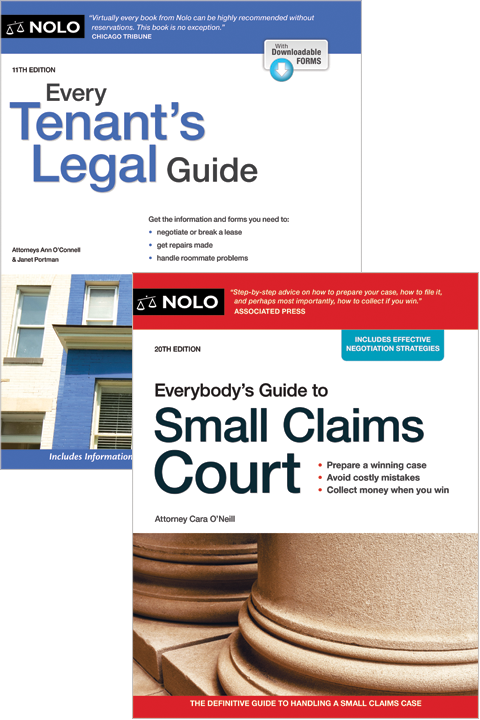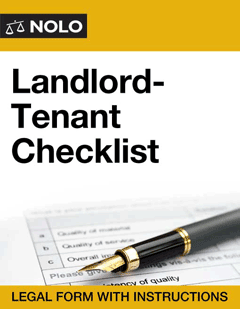A guide to understanding your rights and legal options when a pest infestation threatens the habitability of your home.

As a renter, it's disturbing when you discover a pest in your home. Whether it's a persistent trail of ants, the scuttling of mice, or a suspicion of bed bugs, an infestation can quickly turn into a major headache. Most landlords appreciate tenants who report a problem early, because they recognize that an infestation can quickly escalate. But what happens when your landlord doesn't act? This guide explores tenants' rights when it comes to pests and the steps you can take to force your landlord to act.
The Implied Warranty of Habitability: A Tenant's First Defense
Every state recognizes the "implied warranty of habitability"—the legal principle that requires landlords to provide safe, habitable rentals, even if it's not stated explicitly in the lease. A significant pest infestation that threatens health or safety is almost universally considered a violation of this warranty.
The implied warranty of habitability applies only when the infestation (or other issue) is caused by the landlord's action or inaction, though. This means that a landlord might not be responsible for addressing an infestation when it results from the tenant's poor housekeeping or introduction of the pest to the residence.
Understanding Landlord and Tenant Responsibilities
Because landlords aren't responsible for infestations caused by tenants, the first step in a pest dispute is to determine who is responsible for the problem. By default, the implied warranty of habitability generally places the burden on the landlord. However, two key factors can shift some or all of the responsibility to the tenant:
- The cause of the infestation. A pest problem might arise from structural issues with the building. For example, cracks in the foundation, broken pipes, or gaps in doors might allow pests to enter. When an infestation results from maintenance issues such as these, the landlord is almost always responsible. On the other hand, if the pests came from a tenant's poor housekeeping, hoarding, or failure to take out trash, the landlord has a case to argue that the tenant should be responsible for the costs of mitigation.
- The type of pest. Some states address certain types of pests specifically. In particular, many states require landlords to pay for all bed bug-related inspections and extermination, regardless of how the bed bugs got into the rental in the first place. For other types of pests, or if the law doesn't call out a particular pest, the duty is generally on the landlord, but can be shifted to the tenant when there's clear evidence that the tenant is at fault.
Before taking any action, review your lease or rental agreement: Many leases contain a pest control clause that outlines the responsibilities of both parties. Although the lease can't override a state's implied warranty of habitability, it might require the tenant to follow specific procedures to report and deal with a pest problem.
The Tenant's Duty to Notify the Landlord in Writing
Regardless of how the pest was introduced or who caused the problem, tenants in all states have a duty to notify their landlords as soon as possible about an infestation. If you discover a pest problem and don't tell your landlord about it, it could get worse—and you could be on the hook for mitigating it.
Your written notice should include:
- The date the notice was written.
- Your name and the address of the rental property.
- A clear description of the problem. Include the type of pest, where it was discovered, and the extent of the infestation.
- A request for the landlord to address the issue within a reasonable timeframe. The definition of "reasonable" varies based on state and local laws. Generally, though, 24 to 72 hours for a health and safety issue (such as a rat infestation) is acceptable. It's a good idea to put a firm deadline in your letter.
- A statement of what steps you plan to take next. Research your state's rent withholding and repair-and-deduct laws, and note your intent to pursue legal remedies if the landlord fails to act by the deadline.
Read your lease carefully for any requirements about how to send a notice to the landlord, and follow them closely. Keep a copy of the notice for yourself. If your lease is silent about how to report an issue to the landlord, send the notice via certified mail with a return receipt requested.
Legal Options When Your Landlord Fails to Act
It's frustrating when you give the landlord notice of an infestation, but the landlord fails to act. As a tenant, though, it's best not to act hastily—withholding rent or taking matters into your own hands might result in an eviction lawsuit if those remedies aren't allowed where you live. Depending on state law, you might have one or more of the following remedies available to you.
File a Complaint With a Local Housing Authority
In many cities and counties, you can file a formal complaint with the local department of housing, health department, or code enforcement office. Filing a complaint—but still remaining in the rental and continuing to pay rent—is often an effective and minimally risky option for tenants.
After receiving your complaint, the agency will likely send an inspector to your rental. If they find a violation, the agency will issue a formal order to the landlord to correct the problem within a specific timeframe. Failure to comply can result in fines and other penalties for the landlord, including a loss of a rental license in areas that require them.
One of the benefits of this remedy is that it shifts the burden of enforcement from the tenant to a government agency—the tenant now has an ally for fighting the landlord. The downside is that unscrupulous landlords might be inclined to retaliate against tenants who complain; however, retaliation for exercising a legal right is illegal in most states.
Repair and Deduct
In states where the "repair and deduct" remedy is allowed, the tenant can hire a professional to fix a serious problem and then subtract the cost from their next rent payment. In many states, repairing and deducting is allowed only for serious problems—for example, finding one cockroach in your apartment wouldn't qualify, but ongoing discoveries of multiple insects would. Most states also limit how much a tenant can spend and deduct; the cap is often no more than one or two months' rent.
To use this remedy wisely, tenants should:
- Research state and local law and find out if it's an option.
- Follow closely any procedures required under state and local law.
- Give the landlord ample time to respond to the written notice.
- Get multiple quotes from licensed exterminators and choose a reasonable one.
- Keep all receipts and documentation related to the work.
- Include with the next rent payment a detailed letter explaining the deduction and attach copies of all receipts.
Even if the repair-and-deduct remedy is available to you, using it incorrectly can put you at risk of eviction. Consider contacting a lawyer or tenants' rights group before you take any steps.
Withhold Rent
"Rent withholding" is when a tenant stops paying rent to the landlord until the problem is addressed. It's a more aggressive and potentially riskier option than "repair and deduct," because landlords who suddenly don't receive rent are often inclined to start the eviction process as soon as possible.
To use this remedy legally, most states require you to place the withheld rent in an escrow account held by a local bank or court. By putting the rent into escrow, you're demonstrating that you're not simply trying to get out of paying rent; rather, you're holding the funds in good faith until the landlord acts. It's risky, though, because if you withhold rent without a sound legal basis or without an escrow account, you could face eviction.
Break the Lease
If a pest infestation is so severe that your home is uninhabitable, you might have the right to break your lease and move out. In fact, if the infestation is so severe, you might have no choice but to move out due to health and safety concerns. This is known as "constructive eviction" in legalese.
Of all the potential remedies available to tenants, this is the riskiest one. The infestation must be severe enough to be considered a breach of the warranty of habitability, and you must follow a strict legal process, which typically includes providing written notice and a reasonable amount of time for the landlord to make repairs. If a court finds the infestation wasn't severe enough to justify your departure, you could be liable for the remaining rent on your lease—along with any damage to the rental found at the time of your departure.
Does the Type of Pest Matter?
While the general rules apply to most pests, bed bugs in particular have their own legal considerations. Because of the prevalence of bed bug infestations in recent years, along with how difficult they are to eradicate, some states have passed laws specifically detailing how landlords and tenants must deal with them.
For example, in Colorado, landlords have 96 hours after receiving notice of a bed bug infestation to get the unit inspected by a qualified inspector, and must inspect all contiguous units if the presence of bed bugs is confirmed. (Colo. Rev. Stat. § 38-12-1002 (2025).) California law prohibits landlords from renting units they know have bed bugs. (Cal. Civ. Code § 1954.602 (2025).) And a few states, such as Arizona, require landlords to provide educational materials about bed bugs to tenants. (Ariz. Rev. Stat. § 33-1319 (2025).)
Other than bed bugs, most states' statutes deal with pests in general, listing examples (such as rats, roaches, ants, or wood-destroying organisms), but not laying out specific steps landlords must take to eradicate them.
Be Prepared and Document Everything
Your gut instinct as a tenant might be to try to handle an infestation on your own. But, as discussed here, most of the time it's your landlord who's responsible for taking care of the problem. Learning the rights that tenants have in your state and acting to enforce them can save you hundreds of dollars and hours of frustration.
As soon as you observe a pest in your rental, start documenting it. Write down what you saw, where it was, and when you saw it. If you can, take pictures or video. Every situation is different, but if you see a pest more than once, you should consider reporting it to your landlord in writing as soon as possible. Pest problems are definitely something you don't want to let get out of control.
Talk to a Lawyer
Need a lawyer? Start here.
How it Works
- Briefly tell us about your case
- Provide your contact information
- Choose attorneys to contact you
- Briefly tell us about your case
- Provide your contact information
- Choose attorneys to contact you



